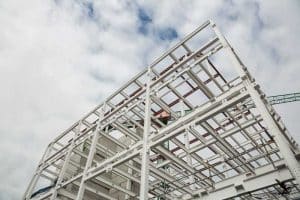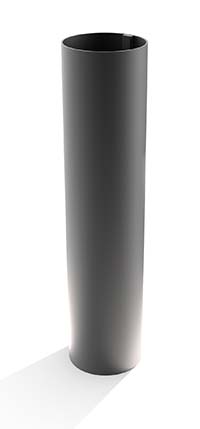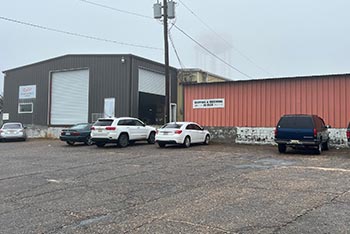In the evolving landscape of construction materials, light gauge steel has emerged as a frontrunner for modern architectural projects. With an increasing emphasis on sustainability, efficiency, and design versatility, we have seen a significant uptick in the use of light gauge steel in various architectural endeavors. This material not only promises a high strength-to-weight ratio but also offers considerable environmental benefits, making it an ideal choice for innovative building designs.
In this deep dive, we explore how light gauge steel is revolutionizing the construction industry, pushing the boundaries of what is architecturally possible, and why it is becoming a staple in our project designs.
Advantages of Light Gauge Steel in Structural Integrity and Design Flexibility
One of the most appealing characteristics of light gauge steel is its incredible capacity for customization and configuration in complex building structures. Unlike traditional materials, light gauge steel can be shaped and modified to meet unique architectural demands, providing ample room for creativity and innovation in design.
1. Structural Integrity: Light gauge steel offers a unique combination of durability and lightweight properties, reducing the load on foundation and other structural components. This facilitates larger spans and open spaces within architectural designs, which are essential for modern aesthetics and functionality.
2. Design Versatility: Whether it is curved surfaces, sharp angles, or intricate overlays, the adaptability of light gauge steel is unmatched. This allows architects and designers to envision and execute bold, non-conventional structures which align with contemporary tastes and standards.
3. Speed of Construction: The prefabrication capabilities of light gauge steel mean that components can be manufactured off-site in controlled environments, leading to faster assembly and reduced on-site labor costs. This is particularly beneficial in urban environments where time constraints and labor efficiency are critical.
Sustainability Benefits of Using Light Gauge Steel in Construction
As environmental sustainability becomes an increasingly critical factor in material selection for construction, light gauge steel stands out for its eco-friendly credentials. Reflecting our commitment to sustainable practices, the utilization of light gauge braced steel aligns perfectly with green building standards.
1. Recyclability: Steel is one of the most recycled materials in the world, and light gauge steel is no exception. Its ability to be recycled multiple times without loss of quality ensures that it contributes to the circular economy, minimizing waste and promoting resource efficiency.
2. Energy Efficiency: Buildings constructed with light gauge steel are better at regulating indoor temperatures due to the material’s inherent properties, which can significantly reduce heating and cooling costs. Additionally, the ease of integrating insulation during the roll forming process improves energy performance, further enhancing its sustainability profile.
3. Reduced Site Impact: Since most of the fabrication occurs off-site, the environmental impact during construction is markedly reduced. This not only helps in maintaining cleaner construction sites but also minimizes disturbance to the surrounding environment, which is particularly advantageous in sensitive areas.
Through optimizing the use of light gauge steel in our projects, we not only enhance the architectural design and efficiency but also contribute positively to environmental conservation efforts. Our ongoing exploration of this versatile material underscores our commitment to innovation and sustainability in all our construction undertakings.
Enhancing Fire Resistance with Light Gauge Steel
Safety is a paramount concern in building construction, especially in relation to fire hazards. Light gauge steel, known for its superior fire resistance properties compared to traditional construction materials like wood, offers an added layer of safety that is essential in modern architecture.
1. Non-Combustibility: Steel does not burn, and using light gauge steel significantly enhances the fire-resistance rating of a structure. This property prevents the spread of fire, providing more time for evacuation and reducing the risk of structural damage.
2. Fire-Rated Assemblies: Light gauge steel can be incorporated into designs that comply with strict fire codes and regulations. Special fire-resistant coatings and the use of fire-rated insulation materials further improve the fire safety of buildings constructed with light gauge steel.
3. Reduced Fire Insurance Premiums: Buildings that incorporate light gauge steel may benefit from lower fire insurance premiums due to the reduced risk associated with their fire-resistant characteristics. This can be a significant financial advantage for building owners over the long term.
Economic Advantages of Light Gauge Steel in the Construction Industry

1. Cost Efficiency in Construction: Light gauge solid steel is lighter than conventional building materials, making it easier and cheaper to transport and handle on-site. The quick assembly of prefabricated components means shorter construction timelines, which translates into lower labor costs and earlier occupancy, providing a quicker return on investment.
2. Durability and Low Maintenance: The robust nature of steel reduces the need for frequent maintenance and repairs. Light gauge steel does not warp, crack, rot, or expand, so buildings last longer and require less upkeep, yielding cost savings over the structure’s lifespan.
3. Modular and Adaptive Reuse: Light gauge steel is well-suited for modular construction techniques, where structures or parts of structures are prefabricated and then assembled on-site. This modularity also lends itself well to adaptive reuse, where existing structures are repurposed for new uses, decreasing the need for new materials and reducing the overall environmental and economic costs associated with new constructions.
Integrating Technology with Light Gauge Steel Fabrication
To further maximize the benefits of light gauge steel in construction, advanced technologies are integrated into the fabrication process, enhancing precision and efficiency while expanding the capabilities of what can be achieved through its use.
1. Computer-Aided Design (CAD): Sophisticated CAD software allows for precise design and engineering of light gauge steel components. This technology not only ensures a high level of accuracy in the measurements and cuts but also allows for complex designs to be executed without material wastage.
2. Automated Roll-Forming Processes: Automation in roll forming has revolutionized the way light gauge steel is processed. Industrially automated machines can perform complex notching and cutting operations at high speeds, increasing throughput and consistency in the quality of the finished products.
3. Robotic Assembly: The use of robotics in the assembly of light gauge steel structures is gaining traction. Robots can efficiently handle repetitive motion, reducing physical strain on their human counterparts and ensuing quality and accuracy of each part.
Through these technological advancements, the process of constructing with light gauge steel becomes not only more efficient but also more adaptable to the rapidly changing demands of architecture and construction. As we continue to innovate, these techniques are expected to evolve, driving further efficiencies and opening up new possibilities for construction projects.
Acoustic Performance of Light Gauge Steel in Building Design
The acoustic properties of a building significantly affect its functionality and comfort levels, an aspect where light gauge steel also stands out. Incorporating light gauge steel in construction not only meets but exceeds the performance demands of modern building acoustics.
1. Sound Insulation: Light gauge steel constructs have excellent sound insulation properties due to their inherent mass and the ability to integrate dense insulation materials within the steel framing. This effect can be enhanced further by designing double-layered walls and using specialized acoustic products.
2. Controlled Vibrations: Steel frames have a higher stiffness-to-mass ratio than timber, reducing the transmission of vibrations across structures. This quality is vital in environments sensitive to vibrations, such as hospitals, studios, and educational institutions, where minimal disturbance from external noise is crucial.
3. Design Versatility for Acoustic Optimization: The flexibility in design offered by light gauge steel allows for the inclusion of optimized structural cavities and specialized materials that enhance overall acoustic performance, ensuring that buildings not only meet but exceed the required standards for soundproofing and acoustic comfort.
The Impact of Light Gauge Steel on Project Turnaround Times
The integration of light gauge documentary management systems and project delivery strategies can significantly reduce overall project turnaround times. Light gauge steel plays a pivotal role in this acceleration, demonstrating its advantage in rapid construction techniques.
1. Faster Project Completion: Due to the prefabricated nature of light gauge steel components, major portions of construction can be completed off-site in a controlled environment, leading to significantly faster erection and assembly times at the site. This contributes to shorter project durations.
2. Simplified On-Site Operations: With components arriving on-site ready to be assembled, often mixed together to form a “kit” of parts for each section, the need for traditional building processes that require lengthy modifications and adjustments is greatly reduced. This streamlines operations, minimizes construction delays, and facilitates easier project management.
3. Increased Predictability: Utilizing light gauge steel enhances scheduling accuracy. The predictability of fabrication and assembly timelines improves with prefabrication, allowing project managers to plan more effectively without the usual contingencies required for on-site builds.
Future Trends in Light Gauge Steel Applications
As the building and construction industry evolves, so do the applications and innovations in light gauge steel. Looking into the future, several emerging trends could redefine how light gauge steel is utilized in industry projects.
1. Sustainable Development Initiatives: As global focus intensifies on sustainable construction, light gauge steel is poised to play an even larger role due to its recyclability and energy-efficient properties. Future developments are likely to focus on enhancing these aspects, particularly through the use of green manufacturing processes and lifecycle assessments to minimize environmental impact.
2. Hybrid Construction Techniques: Combining light gauge steel with other materials such as wood, glass, and composites is a growing trend. These hybrid techniques offer new aesthetic and structural possibilities, optimizing the strengths of different materials for innovative architectural solutions.
3. Integration with Smart Building Technology: The compatibility of light gauge steel with smart building technologies is an area ripe for exploration. Embedding sensors and IoT devices within steel frameworks could lead to buildings that are not only structurally sound but also intelligent—capable of monitoring their health, energy usage, and environmental impact, thereby contributing to smarter cities.
By continuing to integrate light gauge steel in our projects, we are not just building structures; we are crafting future-ready environments that promise safety, efficiency, and sustainability. Moreover, as we move forward, we constantly adapt to the cutting-edge of construction technology and market trends, ensuring our projects always lead the way in innovation and performance.
Enhancing Aesthetic Appeal with Light Gauge Steel
The aesthetic versatility of light gauge steel in construction is often underestimated. Its flexibility and strength allow architects and designers to push the boundaries of traditional architectural forms, creating visually stunning and contemporary designs.
1. Architectural Freedom: Light gauge steel’s ability to be molded into almost any shape and incorporated into various surface finishes offers endless possibilities for facade designs and architectural details. This flexibility heightens the creative potential of projects, allowing them to stand out in urban landscapes.
2. Seamless Integrations: Beyond its structural capabilities, light gauge steel can be seamlessly integrated with other materials, such as glass, wood, or composite panels, providing a sophisticated look that can be tailored to suit any aesthetic preference.
3. Innovative Cladding Solutions: With the use of light gauge steel, innovative cladding solutions are possible, which not only enhance the building’s exterior but also add functional value by improving weather resistance and thermal insulation.
Cost-Effectiveness of Light Gauge Steel in Long-Term Maintenance
Investing in light gauge steel framing isn’t just cost-effective at the construction phase; it also offers significant financial benefits over the lifetime of the building due to its robustness and low maintenance needs.
1. Longevity and Durability: Light gauge steel structures are known for their longevity. They are resistant to many of the factors that typically degrade other materials, such as pests, mold, and moisture, thereby ensuring a longer lifespan with less need for repairs.
2. Reduced Maintenance Costs: The durability of light gauge steel significantly reduces the need for routine maintenance, which can accumulate substantial costs over the years. Its resistance to weather and fire damage further decreases the likelihood of unexpected repair expenses.
3. Resale Value: Due to their durability, sustainability, and modern design appeal, buildings constructed with light gauge steel tend to maintain their value over time. This can be a significant advantage when it comes to leasing or reselling the property.
Final Thoughts
The versatile properties of light gauge steel make it an exceptional choice for modern construction projects. From its superior structural integrity and fire resistance to its groundbreaking applications in sustainable building practices, light gauge steel offers a variety of benefits that go beyond traditional construction methods. By integrating this flexible and durable material into our projects, we not only meet current architectural and construction standards but set new benchmarks for the industry.
Our commitment to innovation and quality ensures that our projects are not just structures, but enduring assets that underscore the importance of forward-thinking in building solutions. Whether aiming for aesthetic brilliance, environmental sustainability, or structural durability, light gauge origins in steel construction create a foundation for achieving exceptional building performance – highlighting our role in shaping future skylines.
Ready to elevate your next construction project with the unmatched benefits of light gauge steel? Contact us at Roller Die + Forming today and discover how our expertly crafted steel solutions can transform your ideas into reality. From initial design to final implementation, we’ll guide you at every step, ensuring your project not only meets but exceeds expectations. Let’s build the extraordinary together!












